Arriving in Pennant Melangell at dusk on Friday, it was a joy to be greeted by the shrine church in its ancient llan, with yew trees possibly older than the Christian presence in the valley – knowing that at any hour during the night, I could walk down the lane from the pilgrim shepherd’s hut, push open the great door and pray in the chancel of the church, beside the imposing arcaded-shrine containing St Melangell’s relics.
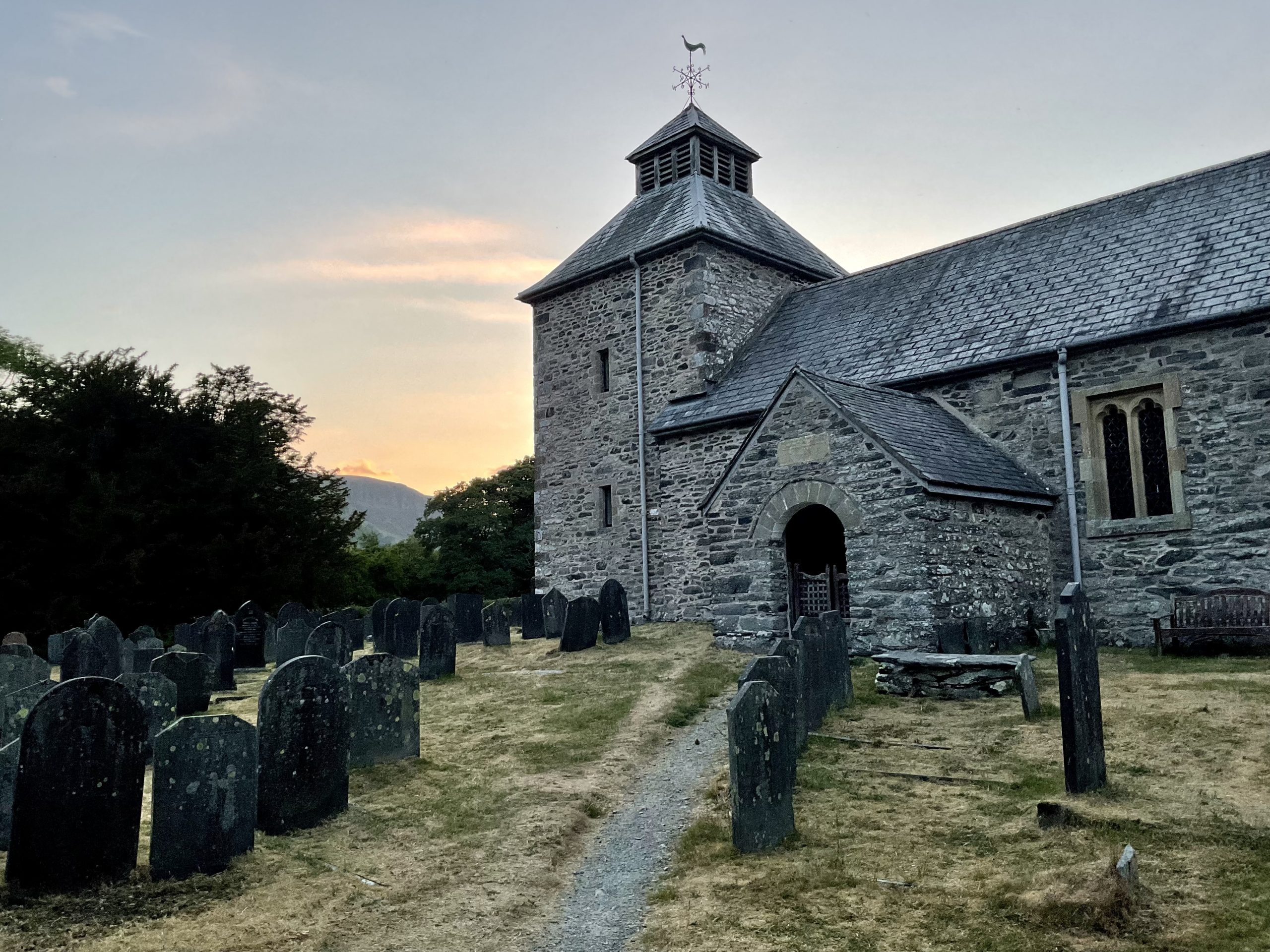
After supper in the beudy bach *, I did so, heading down the lane in the long, late midsummer twilight, to pray beside the shrine, casting light on the high gabled-canopy with a single candle. The owls in the wooded valley sides were the only audible sound apart from the chanting of night prayers. Even as I returned along the lane, the sky was still not dark, though the last light over the mountains was to fade within minutes – the owls continuing, with the breeze gently stirring the grass in the neighbouring meadow, and the sound of the river beyond the boundary of trees.
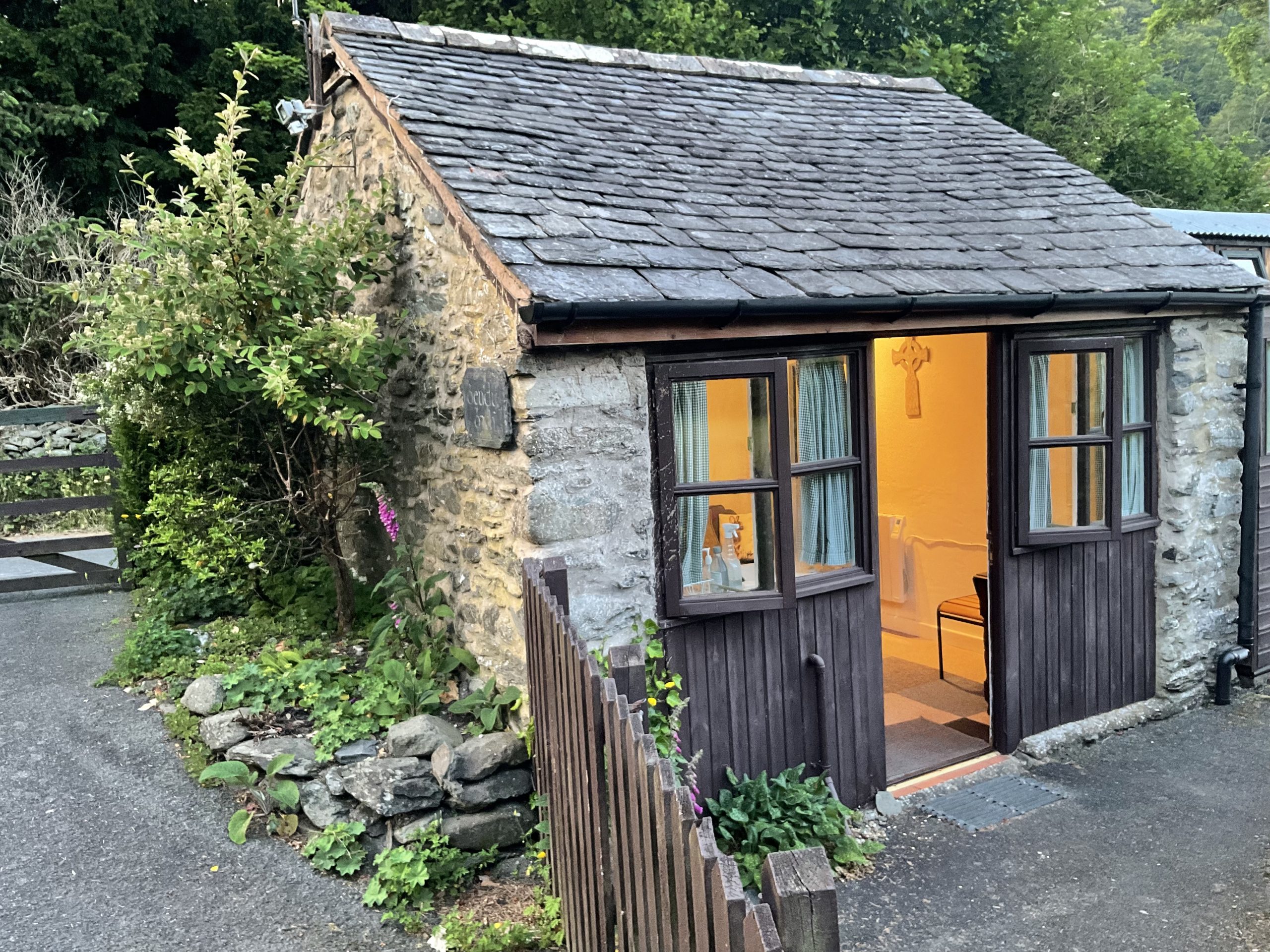
There are few places where we can experience such peace, free from the encroaching noise and disruption of the world: a place where the chink of a teacup on a saucer, or the bang of a closing window seems not only loud, but intrusive; places that make us tread softly and carefully, not wishing to assault the gentle quietness which envelopes us with the mundane noises of the world; places in which to turn the pages of a book slowly, pray softly, and wash the supper things noiselessly.
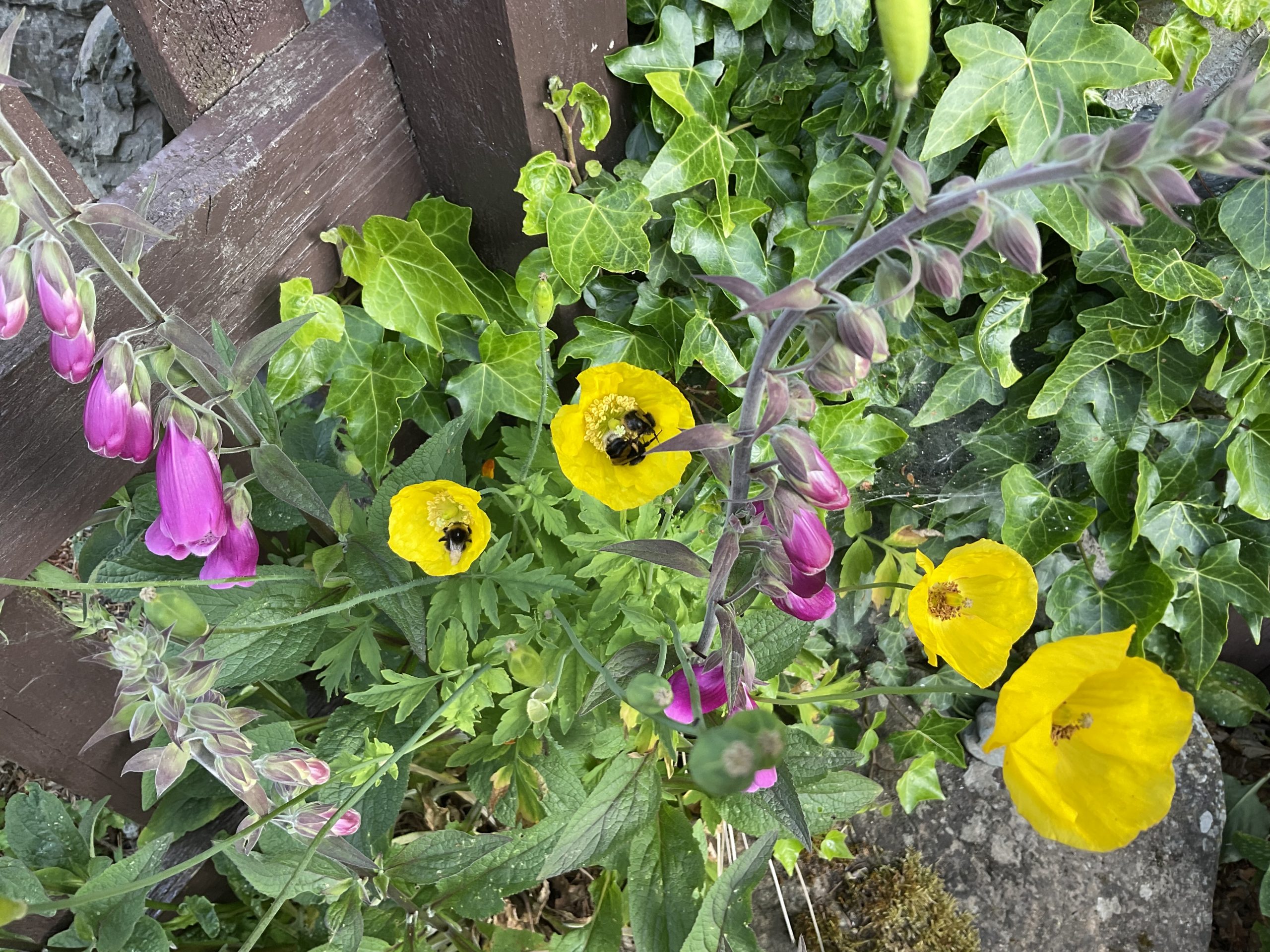
In this enclosure of peace, it was wonderful to wake to the gentle buzzing of bees, frantically tumbling from yellow poppy to yellow poppy, and oddly amplified in the enclosed tube of fox-glove flowers. Such was the number of bumble bees that the borders hummed with their industrious presence.
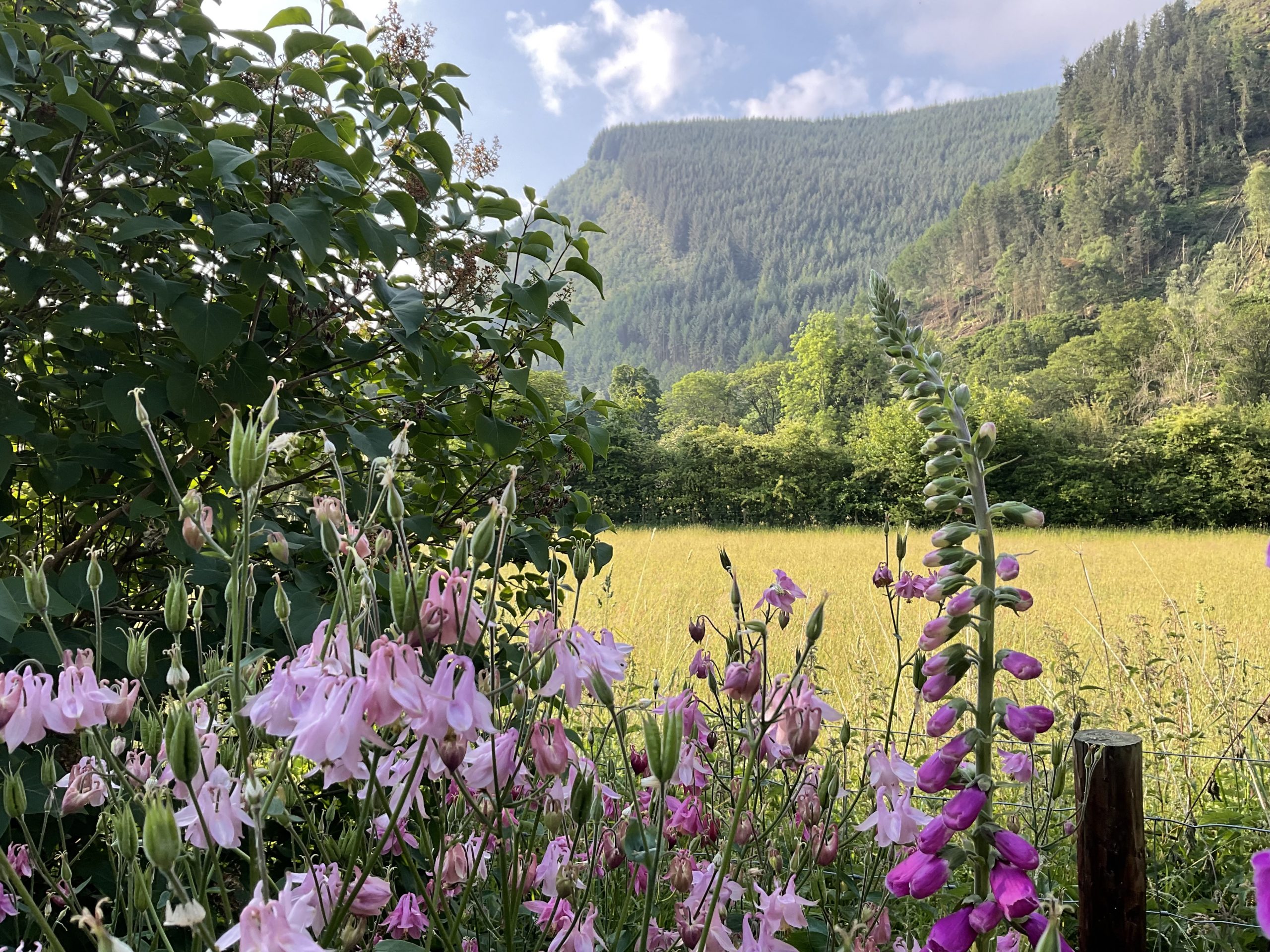
Of course, the ascetical fathers likened monastics to honey-bees, collecting the sweet nectar of divine grace through their spiritual labours, and this image can be used for the monastics who laboured at Pennant Melangell in lives of constant spiritual industry for the sake of the Kingdom of God, so much so that the sweetness of God’s Grace still touches the constant stream of pilgrims who come to honour St Melangell and to seek her intercessions and merciful care.
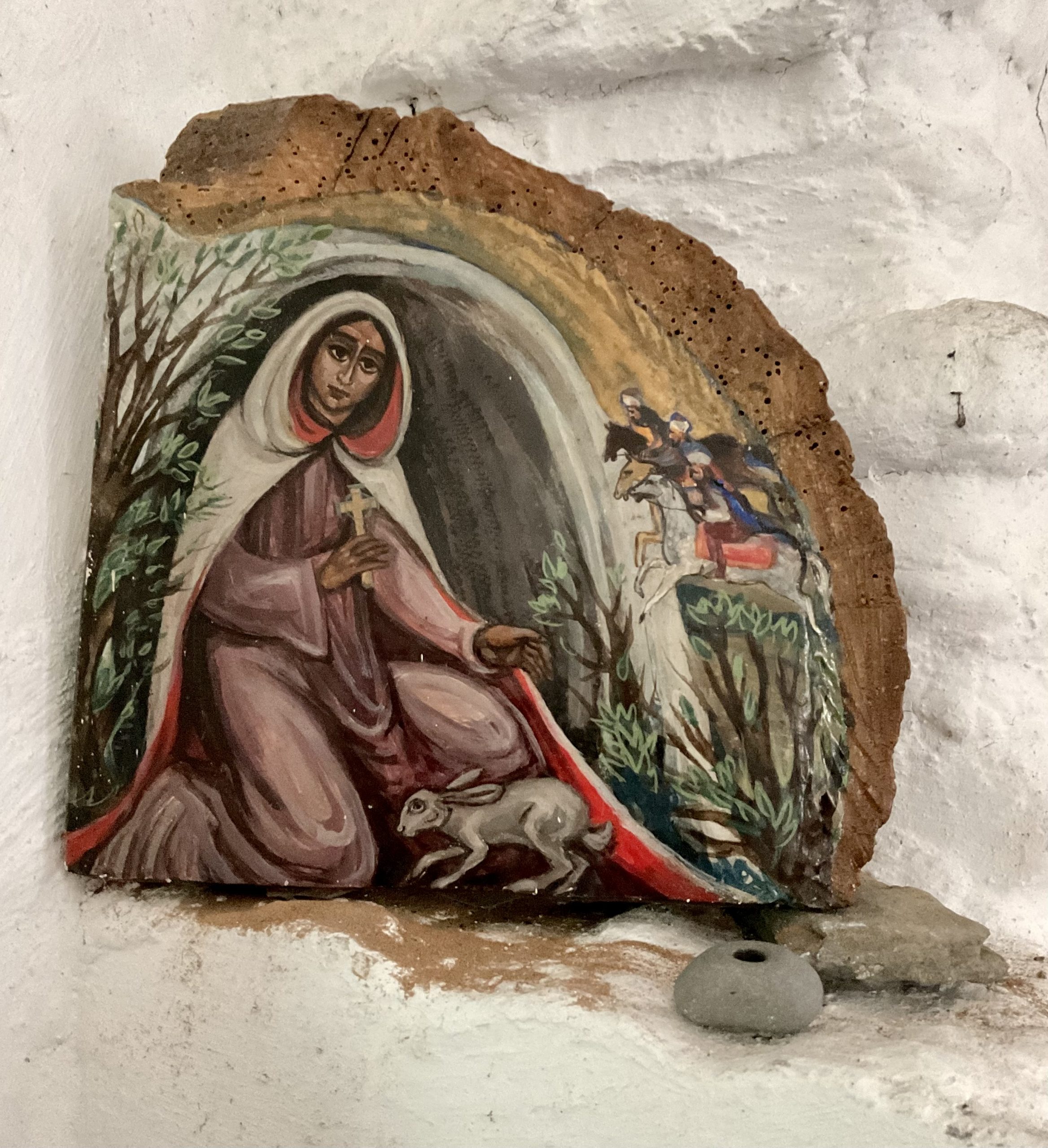
Our great blessing was to do this by celebrating her feast – albeit a day late – by offering the sacrifice of the Holy and Divine Mysteries no more than an arm’s length from the raised stone chest containing her sacred relics.
In this sacred celebration, we entered not only into communion with the Saviour, through His Body and Blood, but in the offering of the Eternal Sacred Banquet, we entered more deeply into fellowship and communion with St Melangell, herself, and all of the saints from ages past.
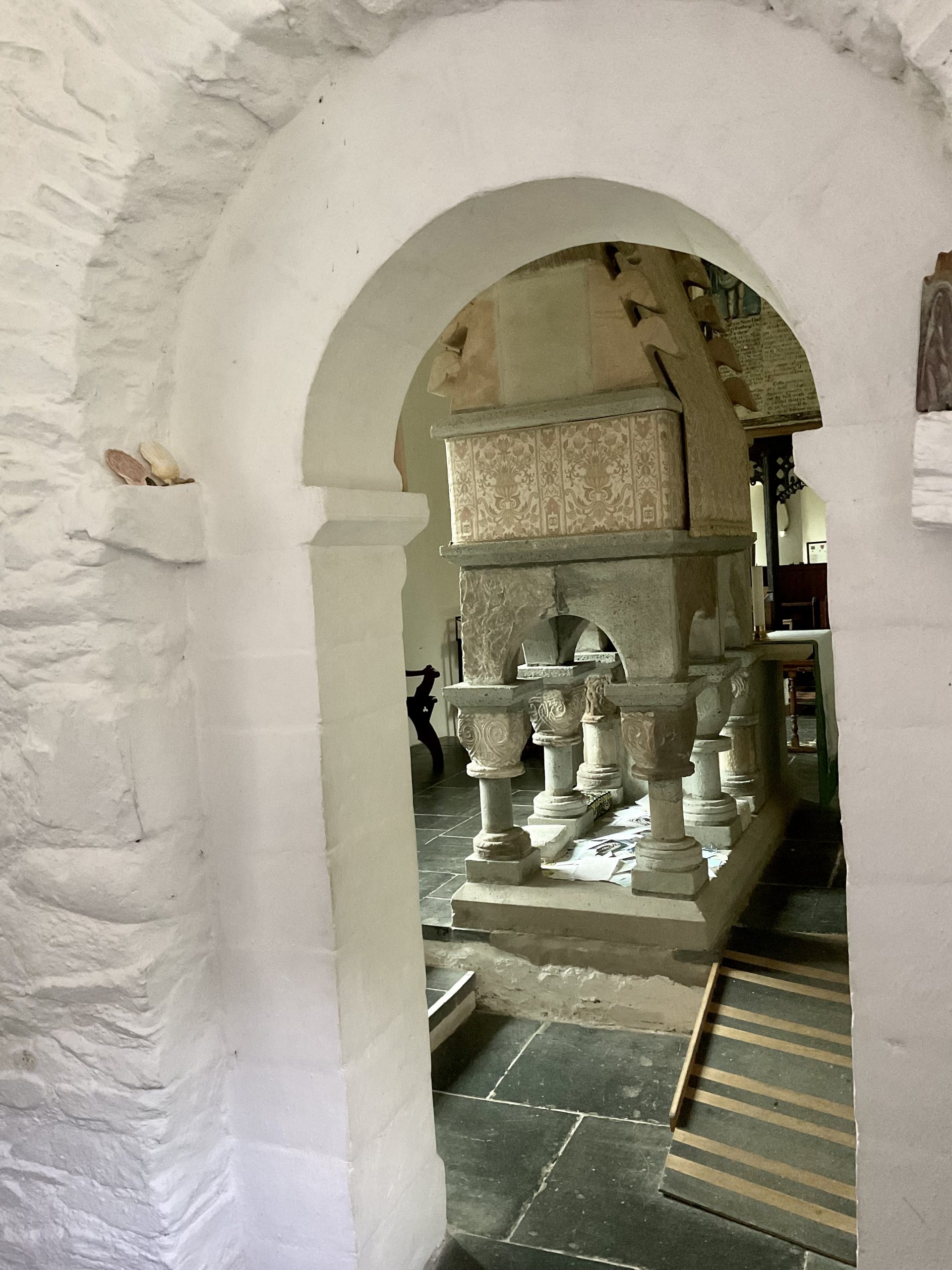
Seeking her intercessions, we joined our prayers with hers, as a common and shared offering of prayer and praise to the Great High-Priest, honouring her memory in our hymns and commemoration, as one who offered herself as a sacrifice of prayer and praise to the Lord.
It was a great honour and blessing to be able to celebrate the Liturgy, and we were touched and humbled by the great warmth and hospitality afforded to our pilgrims who had travelled from Wilstshire, Dorset and Cambridge, as well as our South Wakes parishioners.
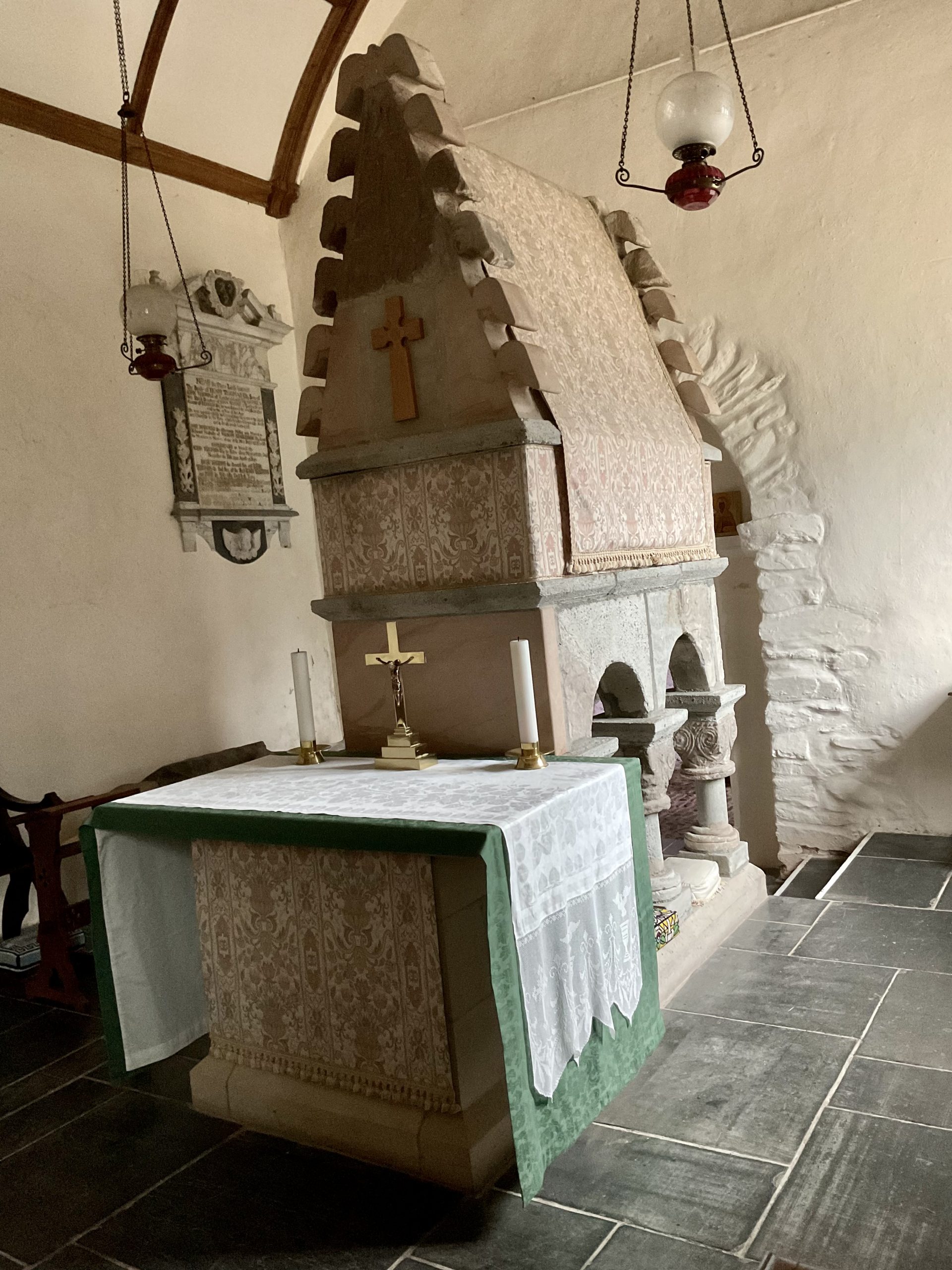
My prayer is that St Melangell’s example, and the reality of her intercessions, will touch each and every one of our pilgrims, affording them strength and courage, so that like her and the wise-virgins of the Gospel for her feast, we may all be ever-vigilant and watchful in lives dedicated to Christ, the Bridegroom of the Church.
Glory to God, for affording us such a great blessing, and thanks to Him for the saints, as our guides and exemplars.
* ‘little cow house’ – converted for use by pilgrims